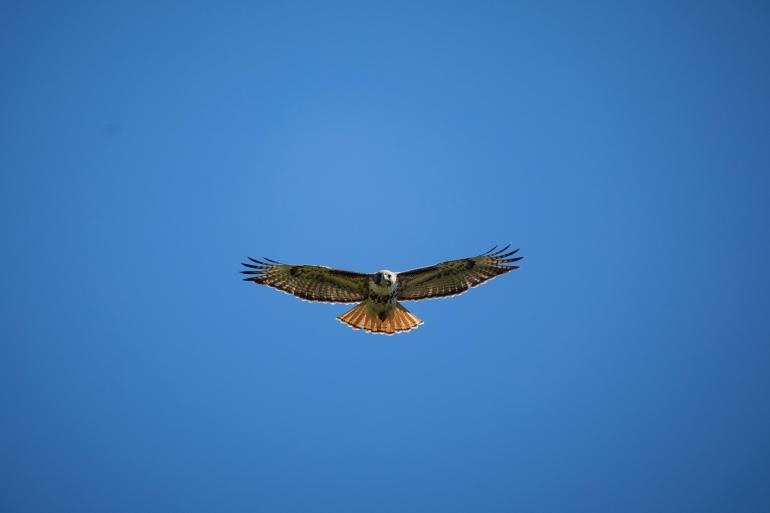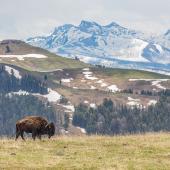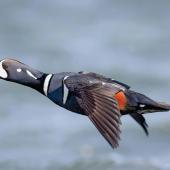The Tell-Tail Hawk
A few years ago I was guiding a family in Yellowstone National Park and, as usual, we were focused on bears. But while having a picnic under a big Douglas fir, we were all startled to see a red-tailed hawk drop down into the sagebrush about 15 yards away. We could barely see the bird through the shrubs, but in a minute or so it lifted off and landed on a four-foot boulder nearby. That’s when we all grabbed our binoculars and got on the bird, because in its talons was a two-foot garter snake. As the hawk proceeded to peck the snakes’ head, and the snake continued to writhe around the hawk’s legs, the nine-year-old boy with me was mesmerized. So was I! This was really good gore!
Red-tailed hawks are the most common soaring hawk in North America. They have a four- to four-and-a-half-foot wingspan, and like most birds of prey, the female is larger than the male. While they come in many color phases, most of them are pretty consistent in appearance. You can identify red-tailed hawks by the classic bird-of-prey shape of their hooked bills and broad shoulders tapering down to the tip of the tail. They often perch on power poles or high trees near open fields. When they’re perched and you view them from the front, they commonly appear light pale on the underside with a speckled “belly band.” From the rear, they are brown on the back, and you may be able to see the rusty tail poking out from under the folded wingtips.
In flight, red-tailed hawks often soar in big, lazy circles and display broad, rounded wings and a fanned tail. On a sunny day, from below you can see the belly band, but the color of the tail with light shining through it appears clear and pinkish. From above, the tail shows a distinct rusty red. Identifying the bird won’t be so easy all the time—immature birds do not have the rusty tail, so you’ll want to use field guides to learn variations.
There is one easy clue—you’ve probably heard the raspy descending call of the red-tail, often written as, “kree-eee-arrh.”
Some of the red-tailed hawks stay in parts of western Montana, including Bozeman year-round, but most migrate south for the winter and then nest here spring through fall.
After laying one to three eggs, both the male and female incubate, but the female incubates more while the male hunts for them both. The eggs hatch at about 32 days, and both sexes/birds care for the young; fledging takes place roughly 44 days later. Adults continue to feed the young after they leave the nest, sometimes for weeks. As the young gain more flight skill, they will often harass the adults for food. Birds mature after two to three years and nest in stout trees or on cliffs from late March to April.
In our area, red-tails feed extensively on ground squirrels, mice, voles, and snakes. The hawks are helpful in controlling rodent populations and are not in conflict with humans.
I’m sure that family in Yellowstone remembers the bears we saw that day, but they’ll probably remember that red-tail/snake interaction in vivid detail for the rest of their lives. Sometimes the most common species present the most dramatic experiences!
Photos by Mike Haring, Pat Clayton
Ken Sinay is the director of Yellowstone Safari Company (yellowstonesafari.com).










